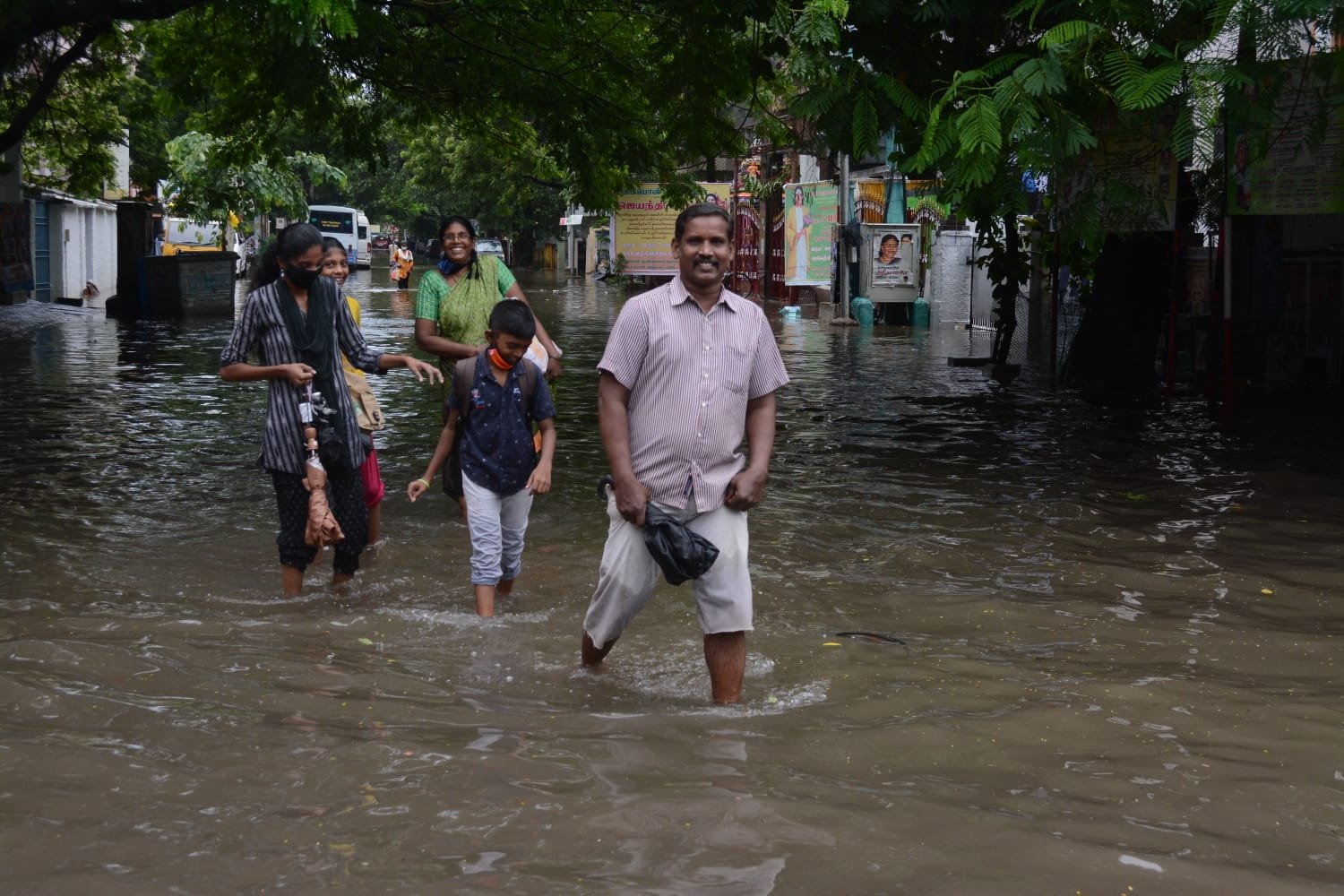KP Suresh Babu, a senior section engineer at ICF, had started helping people facing flooding in November of 2015. Chennai was seeing sustained heavy rains. He and his friends would cook food and distribute among people whose belongings were under water. Little did he know that worse was to come.
As Chennai received more than 30cm rain on Dec 1 and 2, the city became marooned. In southern Chennai, Chembarambakkam water caused heavy floods even as the rains abated. In northern Chennai, things were no better. Suresh Babu, a volunteer with the Art of Living Foundation, recalls that the snapping of communication was the worst part.
In industrial north Chennai, the flood water had entered factories, godowns and warehouses, only to carry away oil. Everywhere, the water was oily and no one wanted to wade through oily water. In Mathur near Ennore Foundry, there were some 10 houses where no one could go. This was before boats had made an appearance. He recalls making a makeshift boat out of thermocol on which they put medicines, water and so on and reached the houses. As they moved forward, the water became shoulder high. Yet his group braved forward and found that the water level was coming down and they were finally able to reach the houses.
“People were in tears when we met them. They had not had water for days. There was no sanitation, no medicines, no food either. They were so happy to drink potable water. Water was all around them but it was dirty and oily,” he recalls. Suresh Kumar cannot forget the look of gratitude in the eyes of the people he and his group had helped.
When Chennai flooded, the residents rose up and made the world sit up and take notice. Everyone rushed to help. Groups formed on their own to collect food, water and medicines and distribute them.
When Chennai flooded, the residents rose up and made the world sit up and take notice.
Volunteers would shout at people peeping out from terraces and ask them what they needed. Relief was arranged somehow, somewhere. As the state machinery came to its knees, Chennaites took it upon themselves to help themselves. It was an extraordinary time. Nearly everyone became a volunteer helping in whatever way they could.
But just as the city started to pull back, a fierce debate started about what went wrong. The unanimous conclusion was the destruction of waterbodies and their conversion to residences had destroyed flood control devices. But fingers were pointed at the administration, too. The main charge was that though Chembarambakkam Lake was filling up, the administration had not ordered water release sooner.

Now, water release from Chembarambakkam has been ordered before level reached 85% of full capacity
Sudden release of much water led to widespread flooding without warning that led to loss of lives, it was charged. Some media reports suggested that the officials were waiting for water release orders from then Chief Minister J Jayalalithaa but no orders came and therefore they did not release any water.
The state government refuted this saying the release of water was as per a set of rules called the Flood Compendium Rules for the forecast of “isolated very heavy rain” put out by the Met department for coastal Tamil Nadu. Chennai and adjoining districts received twice the “very heavy rain” of 12.4 cm to 24.4 cm, the government pointed out. The state government said that Chembarambakkam received more than 2 tmcft of water in 24 hours – an unprecedented amount – which is equal to 60% of the reservoir’s capacity and early release of water would not have helped. Moreover, there was no forecast of so much rain, it said.
Chief Minister Jayalalithaa said release of water is ordered by the chief minister only for agricultural purposes whereas release from reservoirs is managed by Metrowater engineers.
As a follow-up to this, the flood compendium rules came under the scanner. The document, prepared in 1984, fixed all responsibilities for release of water to prevent flood on an assistant engineer of the Public Works Department. Senior engineers had full discretion to issue orders to save the tank. But whether water can be released in anticipation of floods and which agencies’ forecast should be taken and whether forecast rainfall in all catchment areas needed to be taken into account were gray areas.
Senior PWD engineers were on watch at the tank and in touch with top officials, it was learned. But no orders came at that time.
This time though, water release has been ordered even as the reservoir started filling up. On November 6, 7 and 8, the level has been at less than 83 ft and has been maintaining. Water release was ordered on November 7. Water is being released from Puzhal and Chembarambakkam.
